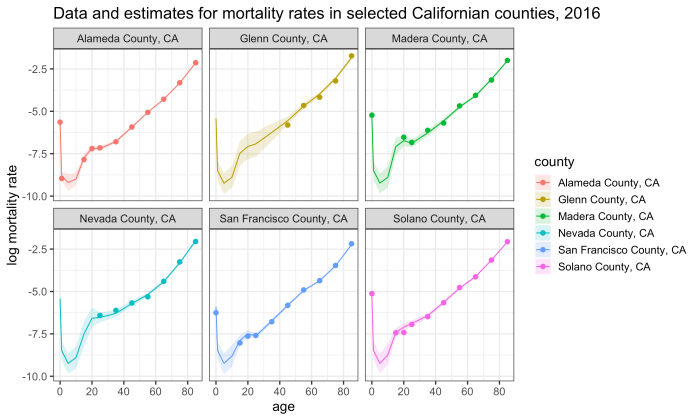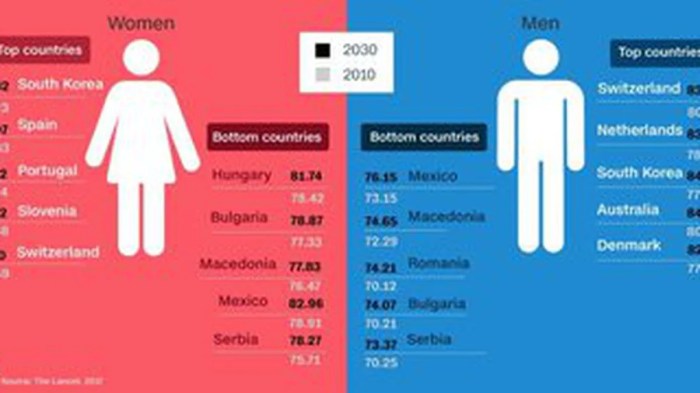Embarking on a journey into the realm of life expectancy definition ap human geography, we unravel the intricate tapestry of factors that shape human lifespans, exploring its profound implications for human development and well-being.
Life expectancy, a cornerstone concept in human geography, quantifies the average number of years an individual is expected to live, offering insights into the health, socioeconomic conditions, and environmental factors that influence our longevity.
1. Definition of Life Expectancy

Life expectancy refers to the average number of years a person is expected to live, based on current mortality rates and patterns in a specific population. It is a key indicator of human well-being and progress, and it is used to assess the overall health and development of a country.
Life expectancy is typically measured and calculated using mortality data collected from censuses, vital registration systems, or sample surveys. It can be expressed in different ways, such as life expectancy at birth (LEB), which represents the average number of years a newborn is expected to live, or life expectancy at different ages, which indicates the average remaining lifespan for individuals who have reached a certain age.
2. Factors Influencing Life Expectancy

Numerous factors influence life expectancy, including:
- Healthcare:Access to quality healthcare, including preventive care, vaccinations, and treatment for diseases, significantly impacts life expectancy.
- Nutrition:Adequate nutrition, including access to a balanced diet, is essential for maintaining good health and preventing malnutrition and related diseases.
- Environmental conditions:Clean air, safe water, and proper sanitation contribute to a healthier living environment and reduce the risk of diseases.
- Lifestyle choices:Personal habits, such as smoking, excessive alcohol consumption, and lack of physical activity, can negatively impact life expectancy.
These factors interact and contribute to variations in life expectancy across different populations. For example, countries with well-developed healthcare systems and access to quality nutrition tend to have higher life expectancies compared to those with limited healthcare and nutritional resources.
3. Life Expectancy and Human Development: Life Expectancy Definition Ap Human Geography

Life expectancy is closely linked to other indicators of human development, such as education, income, and access to resources. Countries with higher life expectancies generally have better education systems, higher incomes, and greater access to healthcare, housing, and other essential services.
Life expectancy can serve as a measure of a country’s overall well-being and progress. Countries with high life expectancies typically have healthier populations, lower mortality rates, and better living conditions, indicating a higher standard of living and quality of life.
4. Spatial Variations in Life Expectancy

Life expectancy varies significantly across different regions, countries, and cities. Some areas may have life expectancies over 80 years, while others may have life expectancies below 50 years.
- Developed countries:Generally have higher life expectancies due to factors such as advanced healthcare systems, better nutrition, and improved living conditions.
- Developing countries:Tend to have lower life expectancies due to challenges such as limited healthcare access, malnutrition, and environmental hazards.
- Within-country variations:Life expectancy can also vary within countries, with urban areas often having higher life expectancies compared to rural areas due to better access to healthcare and other resources.
These spatial variations highlight the influence of socioeconomic and environmental factors on life expectancy and the need for targeted interventions to address disparities.
5. Future Trends and Projections
Life expectancy is projected to continue increasing in the future, driven by factors such as:
- Technological advancements:Innovations in healthcare, such as new treatments and vaccines, contribute to improved survival rates.
- Lifestyle changes:Increasing awareness of healthy lifestyles, including better nutrition and physical activity, can lead to longer life expectancies.
- Environmental improvements:Reducing pollution and promoting sustainable practices can create healthier living environments.
However, challenges such as climate change, infectious disease outbreaks, and increasing inequality could potentially impact life expectancy trends in the future.
Commonly Asked Questions
What is the significance of life expectancy in human geography?
Life expectancy serves as a key indicator of a population’s health, socioeconomic conditions, and overall well-being, providing valuable insights for policymakers and researchers.
How is life expectancy calculated?
Life expectancy is typically calculated using mortality data and statistical models that estimate the average number of years an individual is expected to live under prevailing mortality rates.
What factors influence life expectancy?
Numerous factors contribute to variations in life expectancy, including healthcare access, nutrition, environmental conditions, lifestyle choices, and socioeconomic status.